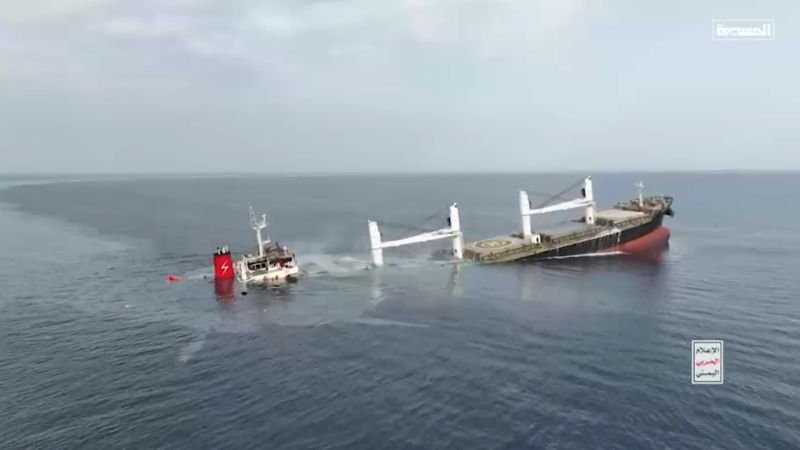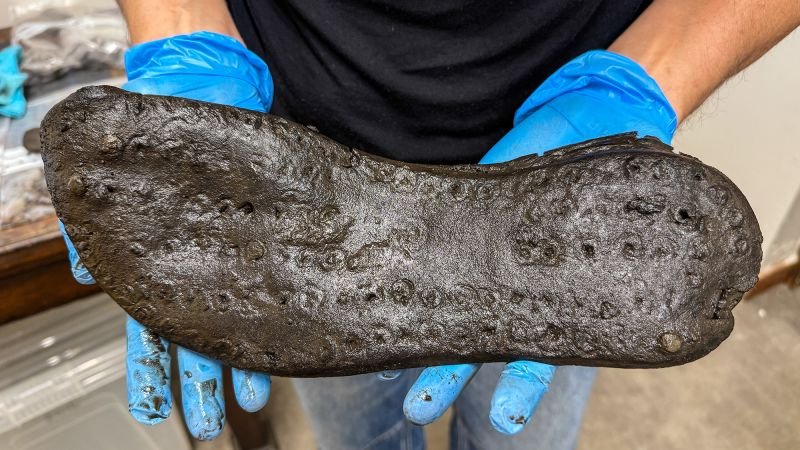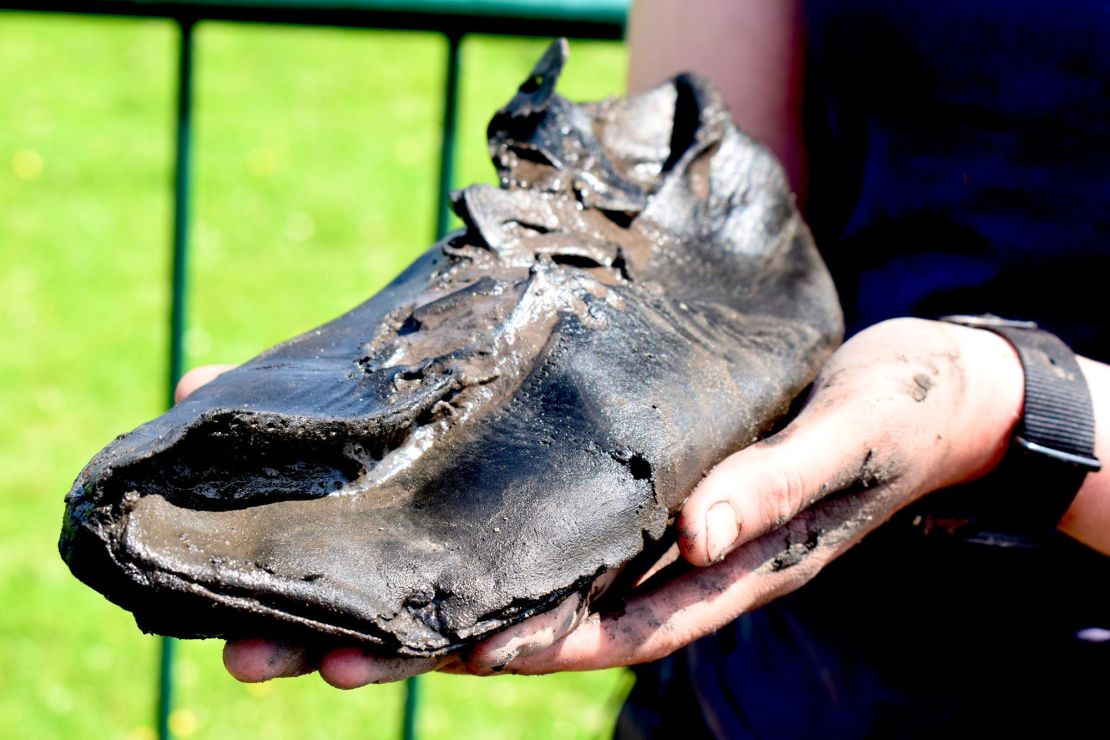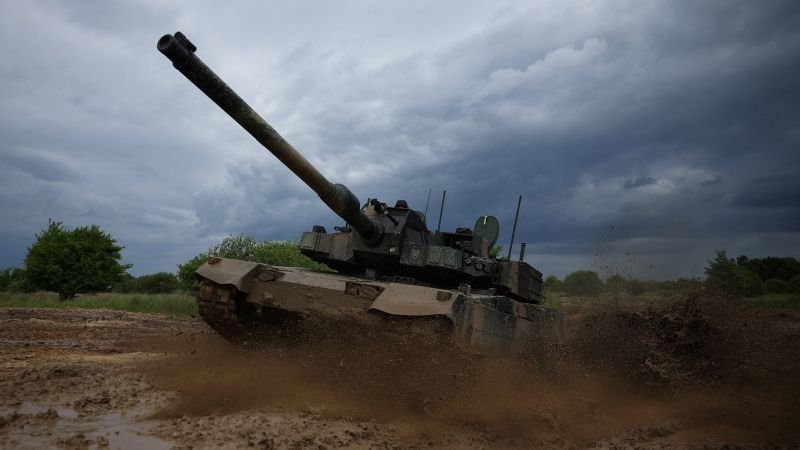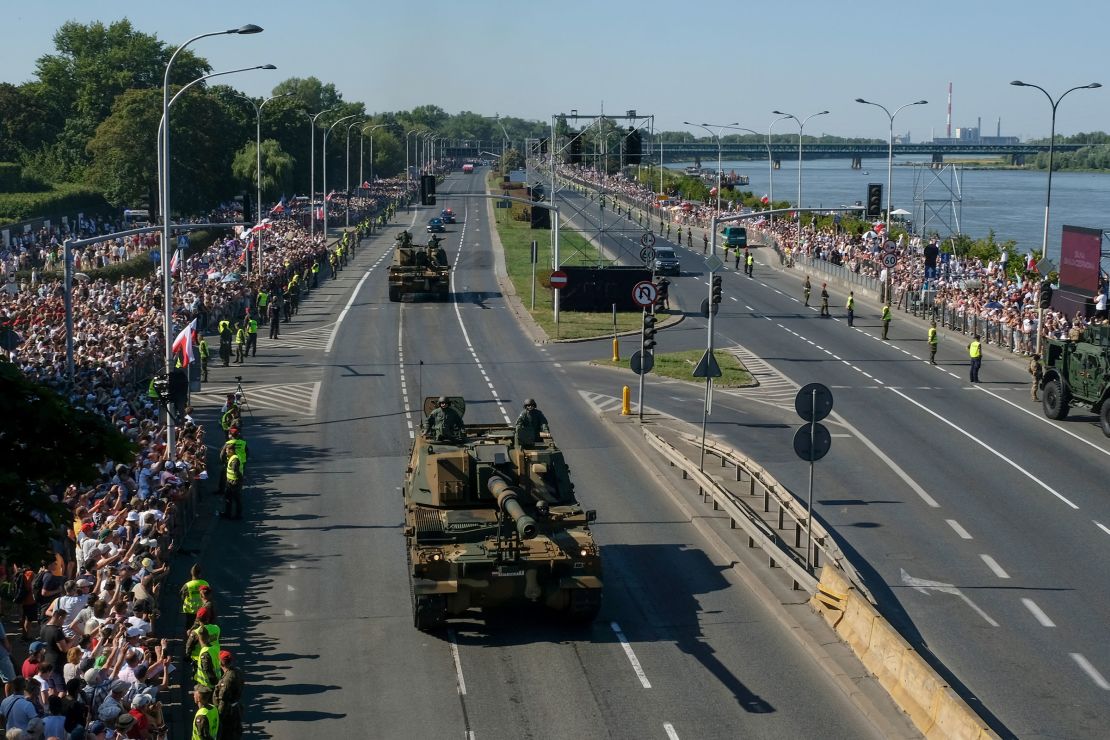CNN
—
An ancient Roman mystery is afoot in the rolling hills of northern Britain.
Archaeologists have unearthed a stash of unusually large shoes at the ruins of a first-century military fort along Hadrian’s Wall, a 73-mile (117-kilometer) stone barrier that famously shielded the Roman Empire’s northwestern perimeter from foreign invaders. The discovery is raising new questions about the lives and origins of the fort’s inhabitants.
The giant leather soles were found at Magna Fort in May among 34 pieces of footwear, including work boots and baby-sized shoes, that are helping to paint a picture of the 4,000 men, women and children who once lived in and around the English site just south of the Scottish border.
Eight of the shoes are over 11.8 inches (30 centimeters) in length — a US men’s size 13.5 or greater based on Nike’s size chart — making them larger than average by today’s standard and sparking suspicions that unusually tall troops may have guarded this particular fortress at the empire’s edge.
By contrast, the average ancient shoe found at a neighboring Roman fort was closer to a US men’s size 8, according to a news release about the discovery.
“When the first large shoe started to come out of the ground, we were looking for many explanations, like maybe it’s their winter shoes, or people were stuffing them, wearing extra socks,” recalled Rachel Frame, a senior archaeologist leading the excavation. “But as we found more of them and different styles, it does seem to be that these (were) just people with really large feet.”
As digging continues at Magna Fort, Frame said she hopes further investigation could answer who exactly wore these giant shoes. A basic sketch of the site’s past is just starting to come together.
When the Magna Fort was in use, multiple different Roman military troops and their families moved into the site every few years after it was built around AD 85, archaeologists suspect.
Inscriptions on the fort’s walls and altars recount settlements of Hamian archers from what is now Syria, Dalmatian mountain soldiers from Croatia and Serbia, and Batavians from the Netherlands, but the length of time each group stayed at the stronghold remains unknown.
Likely following orders from the Roman army, the troops would often leave the fort for distant regions and in their haste, ditch shoes, clothing and other belongings in the surrounding trenches, Frame explained.
Additionally, new occupants requiring more space would have built larger structures on top of the existing fort, packing rubble and clay between the walls and trapping any belongings left by the previous tenants, Frame said.
“As archaeologists, we like trash,” said Dr. Elizabeth Greene, an associate professor of classics at the University of Western Ontario. “You get those habitational layers where things were just left behind, maybe forgotten about, and that tells us more about the space.” Greene has studied thousands of shoes collected from the nearby Vindolanda Roman Fort, which has been excavated since the 1970s and is among the most well-studied of the Roman forts along Hadrian’s Wall.
The recently discovered Magna shoes share some similarities with those in the Vindolanda Fort collection, said Greene, who was not involved in the Magna excavation process, but has viewed the artifacts.
For one, the soles of the shoes from both sites are made from thick layers of cowhide leather held together with iron hobnails, she explained. While only a couple of the shoes discovered at Magna have some of the upper portions still intact, the Vindolanda Fort shoe styles include closed military boots and open work boots, as well as sneaker-like shoes reaching just below the ankle and sandals with leather fasteners.
It’s likely that the leather soles of the Magna shoes survived thousands of years in the ground thanks to ancient tanning techniques that used crushed up vegetative matter to create a water and heat resistant coating, Greene said. Testing is still underway to confirm this hypothesis.
The length of the extra-large Magna shoes suggests the original owners may have been exceptionally tall, Greene said. At Vindolanda, only 16 out of the 3,704 shoes collected measured over 11.8 inches (30 centimeters).
Ancient Roman military manuals often described the ideal recruit as being only 5 feet, 8 inches or 5 feet, 9 inches in height, according to Rob Collins, a professor of frontier archaeology at Newcastle University in England. But the soldiers stationed around Hadrian’s Wall came from all around the far-reaching empire, bringing a wide diversity of physical traits to their settlements, he said.
Still, why Magna specifically might have needed troops of towering stature remains unclear.
To piece together the shoe owners’ identities, researchers will examine the Magna shoes for any signs of wear, Frame said. Any foot impressions left in the shoes could be used to model the feet of the original wearers.
Linking the shoes to real human remains, however, could prove difficult. For one, the Romans near Hadrian’s Wall generally cremated their dead, using a headstone to mark the graves, Collins said. Any bones that remain around the settlements are likely from enemy, illegal or accidental burials.
So far, the few bones that have been found at the Magna site were too soft and crumbly to provide insight, Frame said, but the team continues to search for new burial spots. Pottery and other artifacts found around the site may also help with dating and matching the timelines of the known occupants, she said.
But the researchers worry they could be running out of time.
The 2,000-year-old leather found at both the Vindolanda and Magna sites is preserved by the anaerobic, or low-oxygen, conditions of the soil, Frame said.
The 34 shoes found at the Magna fort, however, are in worse condition than those retrieved from Vindolanda decades ago — a problem Frame attributes to the changing climate.
“The more our climate changes, the more we get heat waves and droughts, or months’ worth of rain in one weekend type (of) scenarios, the more that influences the underground soil conditions and introduces more oxygen into these environments,” Frame explained.
In oxygen-rich soil, microbes thrive, contributing to decay, and acidic pH levels erode natural materials like leather.
Frame said the rapid weather changes only make their excavation of Magna more urgent.
“I’m not saying I don’t get excited about the shiny objects and precious treasures, but for me, archaeology is about the story of everybody else … the stories of the people whose lives weren’t written down, who weren’t kings or emperors or famous heroes,” she said. “These personal objects really put the real human people back into the picture.”



